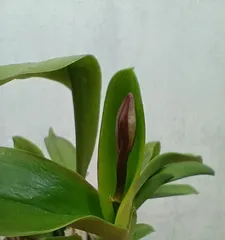Cattleya orchid is a fast-growing, colorful garden plant with high ornamental and decorative value. To ensure Cattleya orchids perform their best in the garden, they require scientific care and management. This article will introduce the care and management methods for Cattleya orchids to help you create a beautiful and elegant garden space.

Understanding the basic characteristics of Cattleya orchid
Cattleya orchid is an evergreen shrub, growing rapidly with lush branches and a branching crown. The flowers come in various colors such as red, yellow, white, and pink, are vibrant, fragrant, and have high ornamental value.
Choosing a suitable growing environment
Cattleya orchids need plenty of sunlight and air circulation and prefer moist soil. When choosing a growing location, select a well-ventilated, sunny spot with good drainage. Avoid excessive sun exposure or waterlogging for extended periods.

Scientific watering
Cattleya orchids need appropriate watering during their growth period, but not too much or too little. Generally, water once a week to keep the soil moist. Reduce the amount of water in winter when the temperature is lower.
Fertilizing
During the growing season, Cattleya orchids need a moderate amount of fertilizer to promote growth and flowering. Generally, apply a compound or organic fertilizer once a month to extend the flowering period and make the flowers more vibrant.
Pruning branches
To maintain the beauty of Cattleya orchids, it is necessary to prune branches regularly. Pruning is usually done in spring and autumn, removing dead, diseased, and intersecting branches, and leaving strong, healthy main trunks.

Pest and disease prevention
Cattleya orchids are susceptible to pests and diseases during their growth. It is important to strengthen prevention in care and management. Use insecticides and fungicides for control, pay attention to watering and ventilation to prevent the breeding of pests and diseases.
Keeping it tidy
In daily care and management, it is important to keep the Cattleya orchid tidy. Timely removal of fallen leaves, flowers, and dead branches can keep the garden clean and improve the ornamental value of the Cattleya orchid.
Proper transplanting
Cattleya orchids grow quickly, and long-term growth in the same place can lead to overly dense roots. Proper transplanting can ensure normal growth. Transplanting is generally done in spring and autumn.
Paying attention to irrigation methods
When watering, pay attention to the method. Using a sprinkler to evenly spray water can ensure that moisture penetrates deep into the soil, promoting the growth and flowering of Cattleya orchids.
Appropriate shading
In high summer temperatures, Cattleya orchids should be shaded appropriately. Use shading nets or plant grass or trees to the south or west to reduce direct sunlight and prevent the flowers from being overexposed.
Noticing temperature changes
Cattleya orchids are highly adaptable to temperature but are still sensitive to changes. In extremely low or high temperatures, take measures to keep them warm or ventilated to avoid damage.
Reasonable pairing
In garden design, Cattleya orchids should be paired reasonably. They can be combined with other colorful flowers to create a beautiful and elegant garden space.
Observant care
In the process of caring for Cattleya orchids, it is important to be observant of changes in flowering period, flower color, and leaf shape. Taking timely measures can ensure the quality of growth and flowering.
Paying attention to light duration
During the growth of Cattleya orchids, the duration of light is also important. Generally, ensure at least 6 hours of direct sunlight daily to guarantee normal growth and flowering.
Through the introduction of the care and management methods for Cattleya orchids, we can see that to make them perform their best in the garden, it is necessary to focus on aspects such as choosing a suitable growing environment, scientific watering, appropriate fertilizing, and regular pruning. Only in this way can a beautiful and elegant garden space be created.